Refund Guaranteed
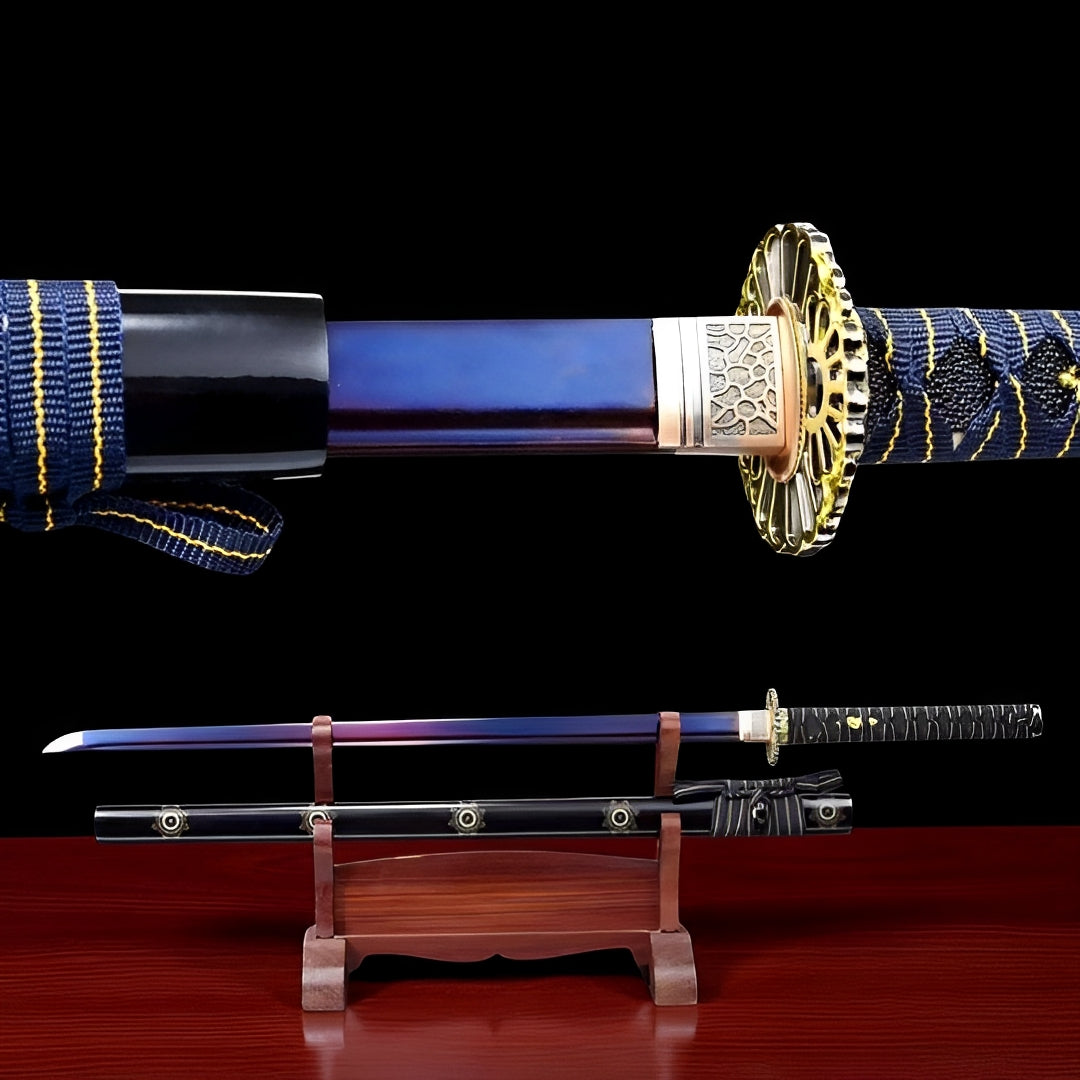
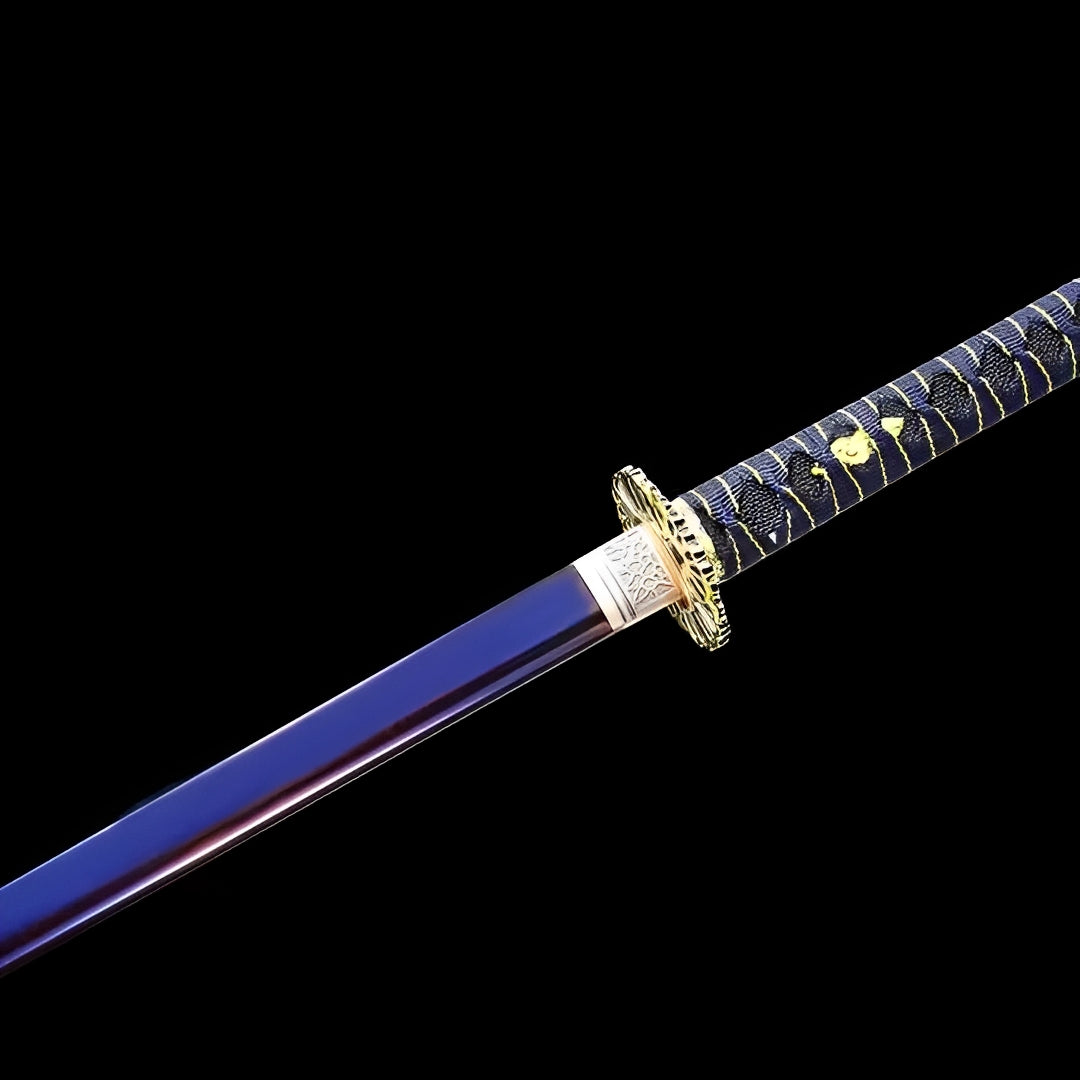
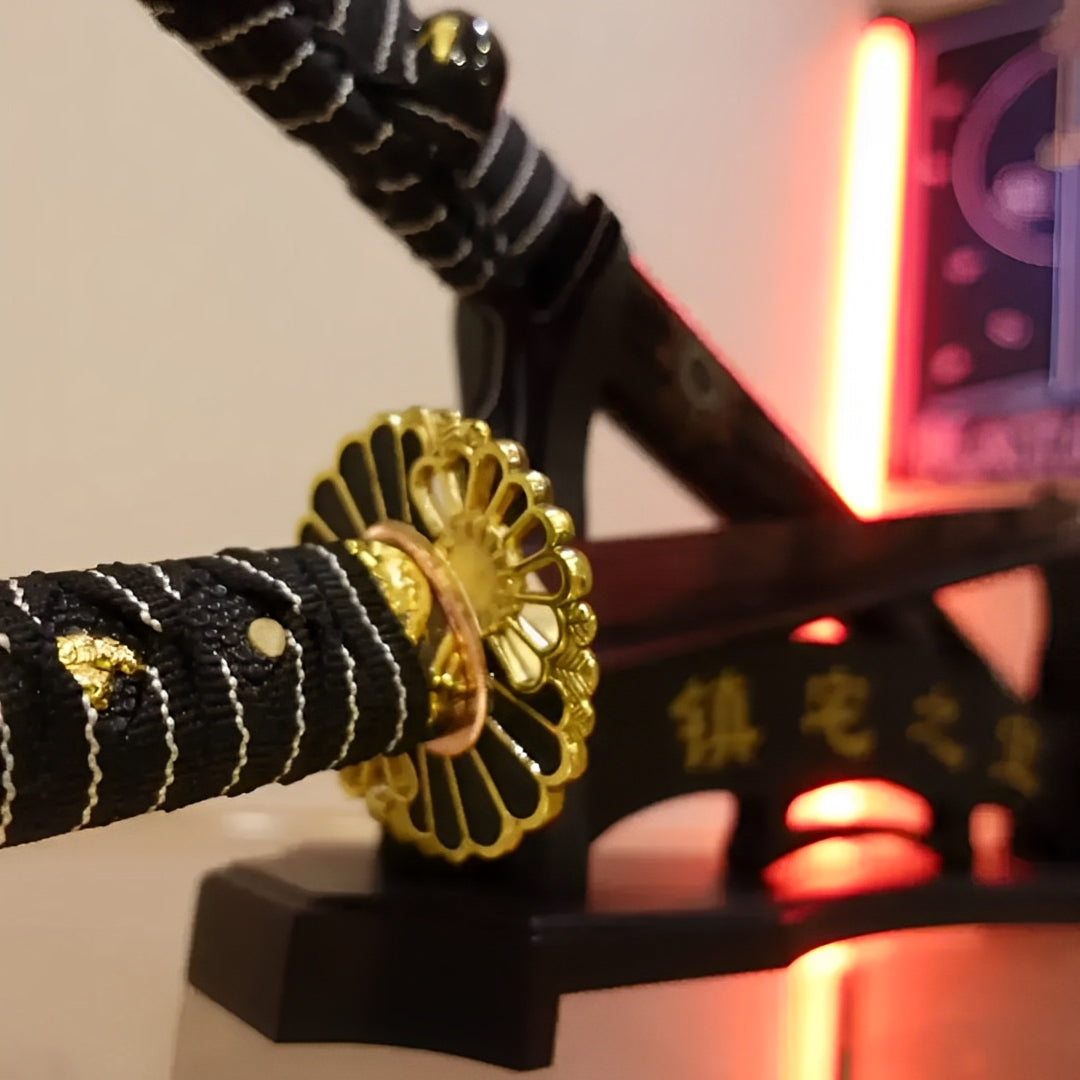
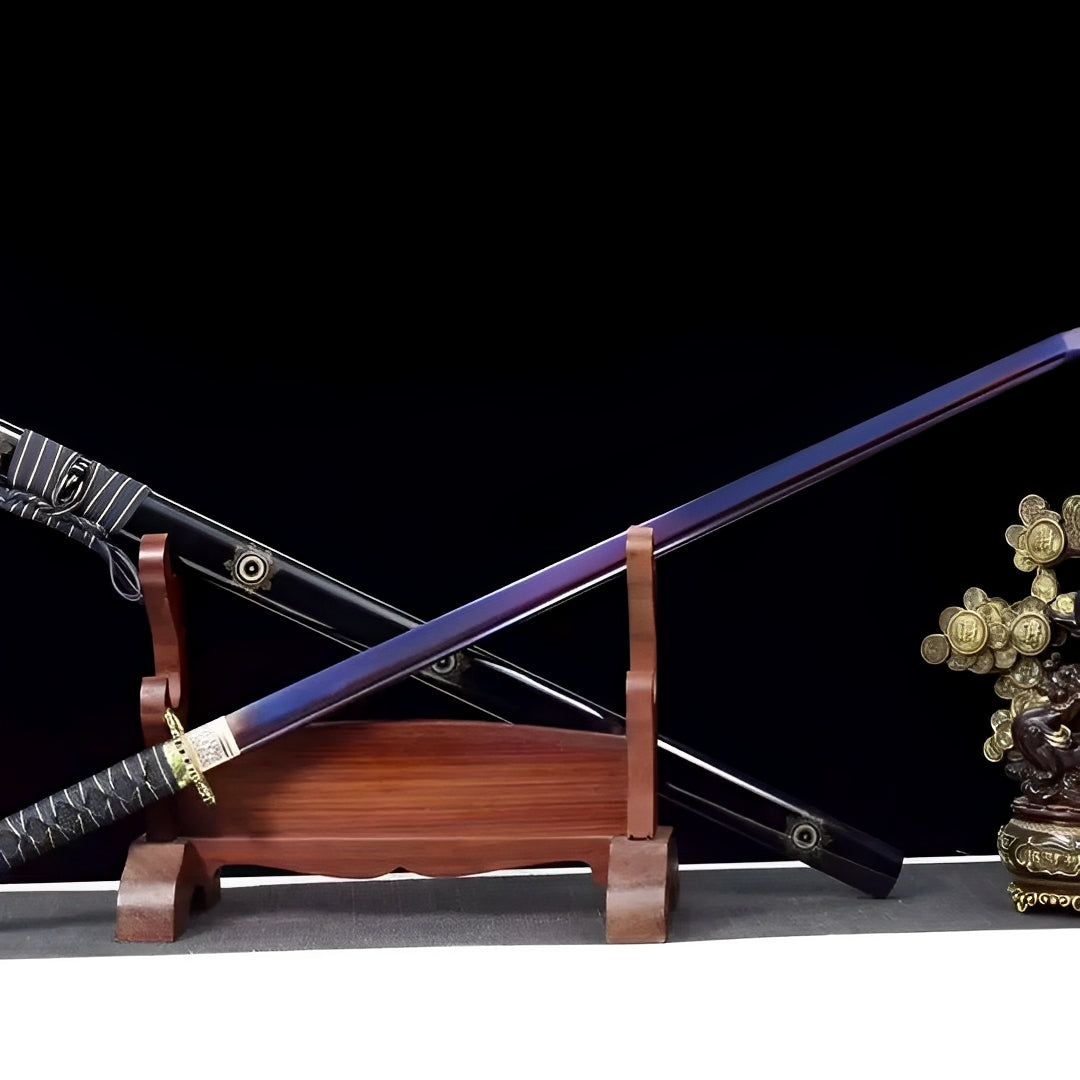
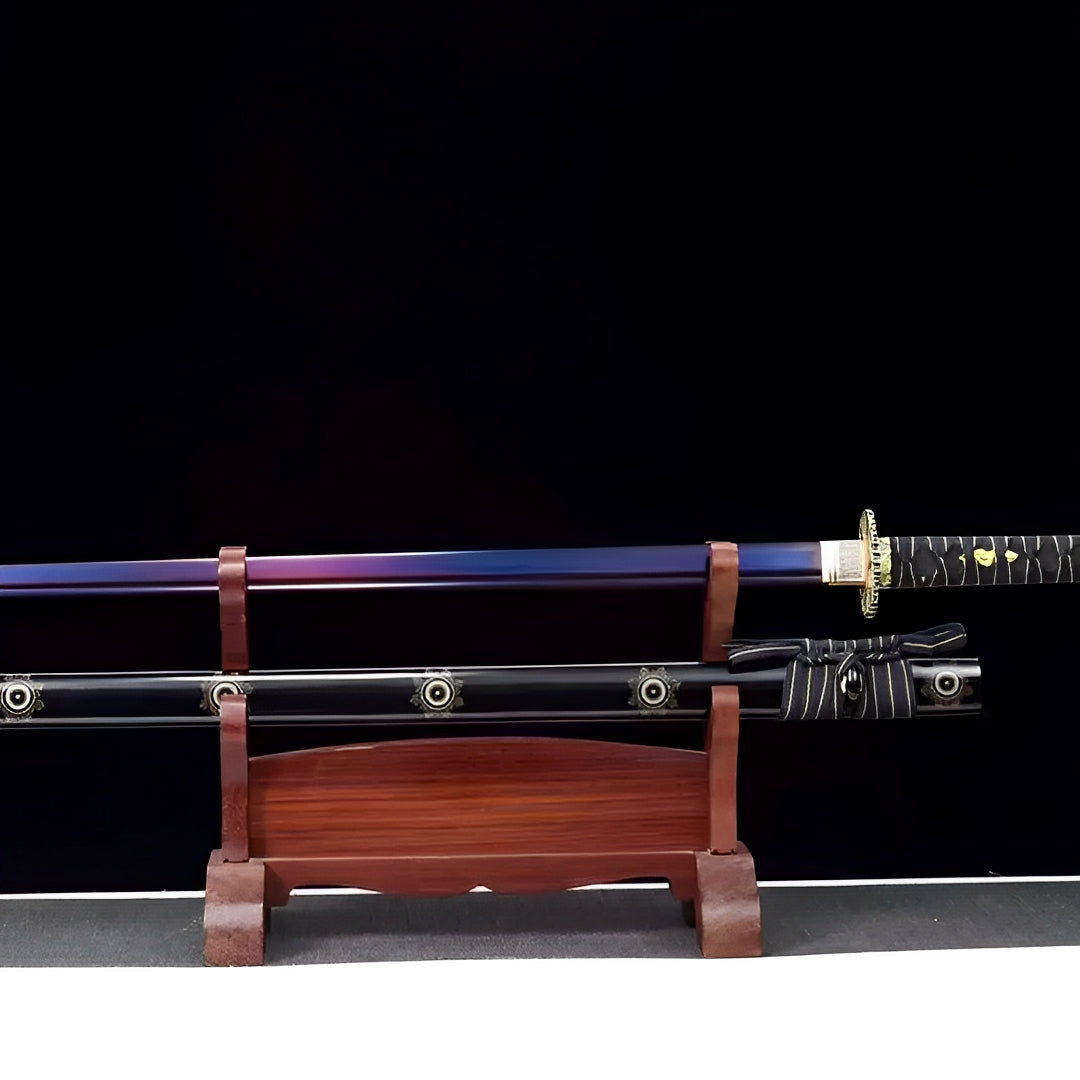
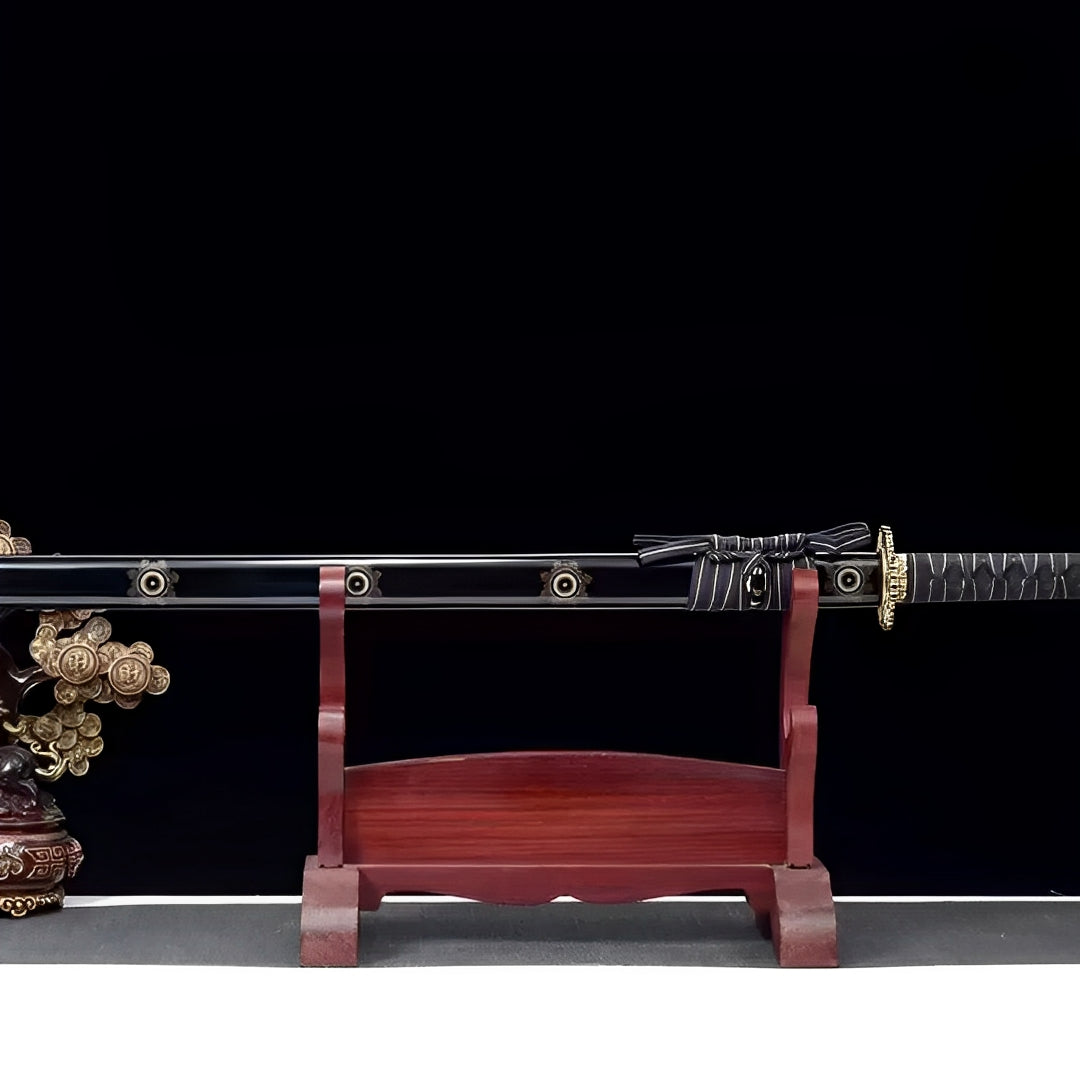
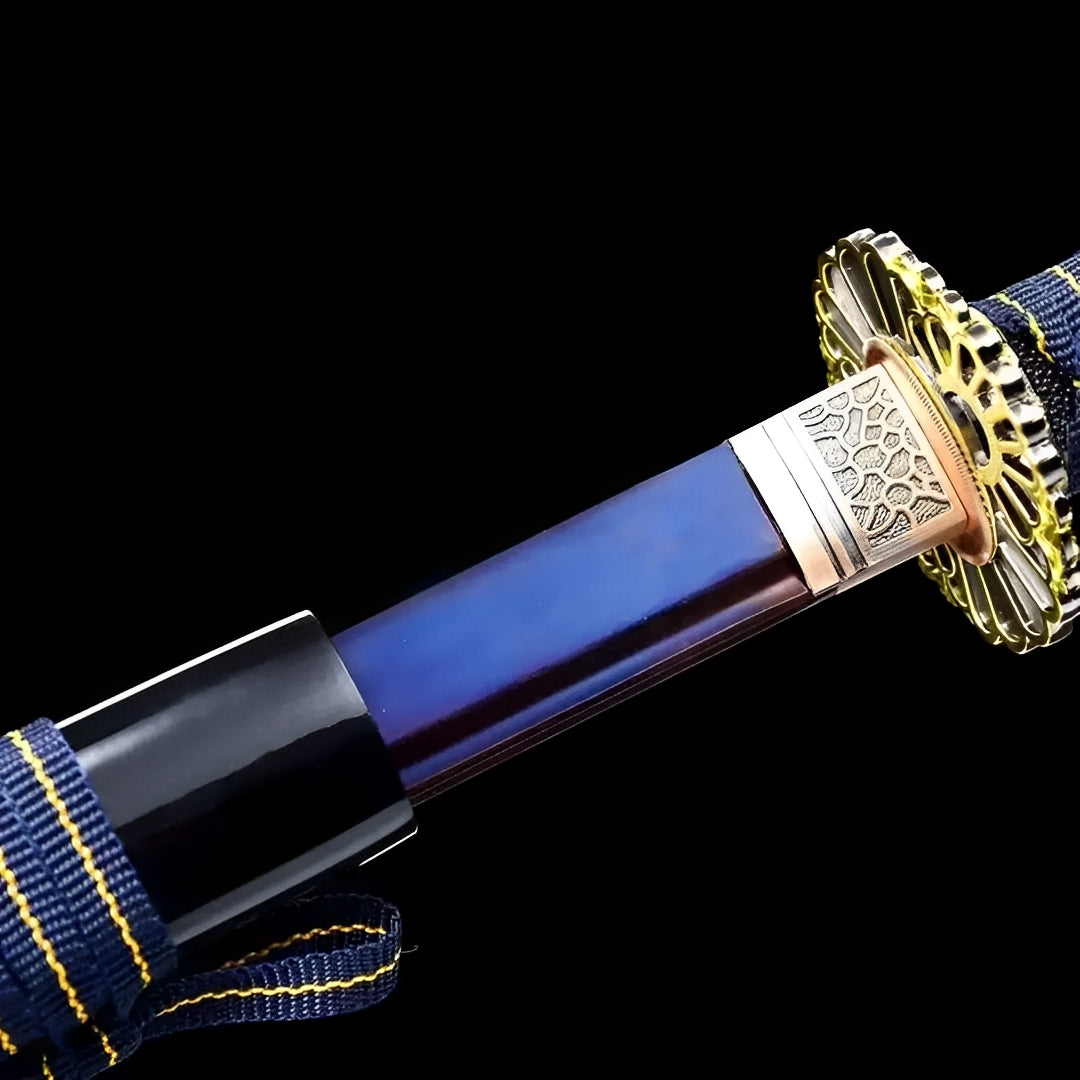
Why choose us
Ships within 48/72h
Forged Blade
Collector Quality
Trusted Globally
Inspired by Japan
Yoru no Kage Ninjato - 夜の影
Popular upgrades
Free Shipping over $250
No Bots, No AI
Refund Guaranteed
Free Shipping over $250
No Bots, No AI
Our team is here to help with any questions or concerns.
We’re always happy to assist you — don’t hesitate to reach out.
Why choose us
Ships within 48/72h
Forged Blade
Collector Quality
Trusted Globally
Inspired by Japan

Yoru no Kage Ninjato - 夜の影
Specifications
- Handcrafted
- SHARP blade
- Full tang in the handle
- Blade: Manganese steel
- Tsuba made of brass
- Lacquered wooden saya
- Solid wood tsuka with synthetic ray skin wrap
- Sageo / ITO made of cotton
- Total length: 105 cm
- Blade length: 72 cm
- Blade width: 3.2 cm
- Blade thickness: 0.7 cm
-
Handle length: 30 cm
Yoru no Kage Ninjato - Twilight Shadow Blade
Cross the threshold with the Yoru no Kage Ninjato, where daylight surrenders to darkness in steel. This twilight ninja sword captures that liminal moment when sun bleeds crimson into horizon and shadows grow bold - blade transitions from deep midnight blue to violet dusk, golden tsuba glows like final sun ray before night claims all. Not tool of crude assassins but weapon of those who rule the in-between hours when normal laws suspend and shadow warriors emerge.
Twilight Steel Transformation
The blade performs chromatic magic rarely attempted on traditional weapons. Beginning near the habaki, deep electric blue dominates - the color of sky moments after sunset when stars begin appearing. This isn't uniform coating but living surface where light creates depth suggesting ocean trenches or night sky's infinite void.
Midway along the blade length, blue gradually surrenders to violet-magenta tones - that precise moment during twilight's progression when photographers call it "magic hour" and painters despair because the colors disappear too quickly to capture. This transition zone fascinates viewers, their eyes tracking the gradient's subtle metamorphosis.
Near the kissaki tip, the violet deepens toward near-black purple - the final shade before complete darkness claims the landscape. This chromatic journey tells visual story of night's arrival, of light retreating, of the world transforming into realm where ninja operated with advantage while others stumbled blind.
Achieving this color transition ninjato requires exceptional technical mastery. The heat-treating and finishing processes must maintain distinct color zones while ensuring seamless transitions preventing harsh lines that would cheapen the effect. Lesser craftsmen produce muddy blends or abrupt changes; master finishers create poetry.
The straight blade geometry typical of ninjato gains dramatic enhancement through this twilight treatment. What could be utilitarian stabbing implement becomes meditation on time's passage, light's surrender, the eternal cycle where day dies so night can reign before dawn's inevitable return.
Night's Hidden Nobility
The name Yoru no Kage (夜の影 - night's shadow or shadow of the night) suggests this blade belongs to elite shadow warriors rather than desperate outcasts. Historical ninja included displaced nobility, educated spies serving daimyo lords, and warriors choosing unconventional paths while maintaining refined sensibilities.
This noble ninja blade acknowledges that secret hierarchy. The elaborate golden tsuba featuring intricate geometric patterns speaks of wealth and taste. The blue-threaded handle wrapping suggests someone who could afford premium materials. The graduated blade coloration requires investment in specialized finishing. This isn't weapon of desperate ronin but tool of professional operating at covert warfare's highest levels.
Certain ninja clans served shogun directly, their "dishonorable" methods protecting rulers who publicly condemned such tactics while privately depending on results only shadows could deliver. These elite shinobi lived double lives - appearing as merchants, monks, or low-ranking retainers while conducting operations requiring skills and intelligence far exceeding their cover identities.
The Yoru no Kage embodies that sophisticated deception. Display it publicly and observers see tasteful sword suggesting prosperous owner. But those who understand recognize the straight blade geometry, the tactical proportions, the design details marking it as shinobi equipment for practitioners operating at mastery level.
Japanese culture respected this duality - acknowledging that maintaining civilization sometimes required dark work performed by those willing to sacrifice their public honor for greater good. The twilight blade captures that moral ambiguity - neither pure day nor absolute night but the complicated space between where necessity trumps idealism.
Sacred Geometry Guard
The golden tsuba demands extended examination. This isn't simple protective disc but elaborate mandala-like composition featuring geometric patterns that could encode esoteric meaning. The circular form divided by radiating lines and angular shapes references kuji-kiri (九字切り) - the nine symbolic cuts ninja performed while reciting protective mantras.
Traditional ninja training included spiritual practices alongside physical techniques. They studied mountain asceticism, esoteric Buddhism, Shinto purification rituals - building mental discipline and psychological resilience for operating in constant danger. The tsuba's sacred geometry might reference those traditions, transforming functional hand guard into spiritual focus object channeling protective energies.
The golden finish captures light dramatically, the bright metal creating focal point where dark handle meets darker saya. This strategic placement of brightness ensures the sword announces itself despite the overall shadow aesthetic - useful for those rare occasions when ninja wanted to be seen, when theatrical intimidation served better than concealment.
The openwork design reduces weight for faster draws while creating visual complexity that rewards close examination. Each geometric element connects to neighbors through precise angles and proportions suggesting mathematical relationships - possibly encoding clan symbols, personal identification marks, or auspicious numbers believed conferring luck and protection.
Quality brass develops patina that enhances rather than diminishes carved details. New bright gold mellows to warm honey tones with darker accents in recesses, the aging process adding character that fresh-from-workshop pieces lack. This natural evolution mirrors the warrior's journey from novice to master.
Midnight Blue Threading
The handle's blue ito wrapping creates stunning visual connection between the blade's twilight colors and the black saya. This isn't random decoration but deliberate color strategy tying all elements into unified aesthetic statement. The navy blue threading catches light subtly, creating texture without overwhelming the composition.
Traditional ito wrapping requires precision - each diamond must align perfectly, each crossing maintain consistent tension, the overall pattern flowing smoothly from fuchi to kashira. Flawed wrapping reveals itself to educated eyes immediately, marking piece as inferior. The Yoru no Kage's clean execution demonstrates master craftsmanship.
The blue specifically evokes midnight sky - that deep navy approaching black but retaining hint of color, the shade astronomers associate with clearest viewing conditions when stars shine brightest. For ninja operating during new moon darkness, this represented ideal working conditions - enough ambient light seeing obstacles while remaining invisible to guards scanning shadows.
Golden menuki ornaments peek through the blue wrapping, their metallic gleam creating visual rhythm along the handle's length. These raised elements provide tactile reference points for proper grip positioning - critical during combat when eyes must track opponents rather than checking hand placement.
The combination of midnight blue threading with golden accents against black base creates color palette both sophisticated and tactical. It works equally well displayed in traditional alcove or modern collection, the timeless combination of navy, black, and gold transcending specific design movements or eras.
Liminal Collection Power
This twilight ninjato attracts collectors fascinated by transition states, liminal spaces, the in-between zones where normal rules suspend. The blade literally depicts that threshold moment between day and night, making it perfect centerpiece for exploring themes of transformation, duality, and threshold-crossing.
The graduated blade coloration provides exceptional display options. Lighting dramatically affects appearance - morning sun creates different effects than afternoon rays or evening illumination. Consider rotating spotlights that graze the blade at varying angles throughout day, the changing light revealing different aspects of the color transition.
The dark palette works magnificently in varied contexts. Modern masculine spaces appreciate the sophisticated navy and gold scheme. Traditional Japanese rooms welcome the cultural authenticity and shadow warrior mystique. Even minimalist galleries find the Yoru no Kage provides visual interest without overwhelming through excessive decoration.
Perfect for collectors specializing in ninja weaponry and covert warfare history, martial artists training authentic ninjutsu who want premium examples for study and inspiration, photographers seeking striking subjects where color and form create dramatic compositions, interior designers curating spaces exploring themes of duality and transformation, or anyone understanding that most interesting moments occur not at extremes but in transitions between states.
The Yoru no Kage particularly appeals to those who appreciate sophisticated color work in weaponry, who understand that ninja culture included aesthetic dimensions beyond pure functionality, who seek pieces telling stories through their design rather than requiring external explanation.
Care Instructions: Clean the color-treated blade gently preserving the twilight finish. The blue ito threading may fade if exposed to direct sunlight - display away from windows or use UV-filtering glass. The black saya benefits from soft cloth dusting. Polish golden fittings periodically with appropriate brass care products. Standard blade oiling protocols apply. Store in climate-controlled environment as temperature extremes can stress specialized finishes.
Where day surrenders to night. The Yoru no Kage Ninjato rules twilight.
Legal Disclaimer
By purchasing from Katana Corp, you acknowledge and agree that:
- You are at least 18 years of age (or the age of majority in your jurisdiction).
- You are solely responsible for verifying and complying with all local laws and import regulations before placing an order.
- Some countries prohibit the importation of swords entirely. Katana Corp is not responsible for orders delayed, seized, or refused by customs authorities.
- All katanas and related products are sold strictly as decorative and display items. They are not intended or certified for combat use.
- Depending on the jurisdiction, swords may legally be considered bladed weapons, subject to specific restrictions or prohibitions.
- Katana Corp disclaims all liability for any injury, damage, or legal consequences resulting from misuse, abuse, or unlawful use of its products.
For full details, please refer to our Terms of Service.
Care & Maintenance
To maintain your katana's appearance and performance over time, we recommend:
- Regularly wiping the blade with a soft cloth to remove fingerprints and moisture.
- Applying a light coat of choji oil to prevent rust (for carbon steel blades).
- Storing the sword in a dry place, preferably inside its saya.
- Avoiding direct contact with hard surfaces to preserve sharpness and finish.
For more care tips, check our full maintenance guide in the FAQ section.
Behind the Blade
Every katana we offer carries the essence of centuries-old craftsmanship.
More than just a weapon, the katana symbolizes discipline, honor, and mastery.
Our artisans draw inspiration from traditional forging methods to ensure each blade reflects the spirit of the samurai — strength, precision, and soul.
Owning one is not just about aesthetics — it’s about carrying a piece of that legacy.
User Experience
This katana is designed to offer a perfect balance between blade and handle.
Its ergonomic tsuka (handle) allows a secure two-handed grip, while the weight distribution ensures smooth, fluid movement.
Whether for training, display or cutting practice, handling feels natural and precise.
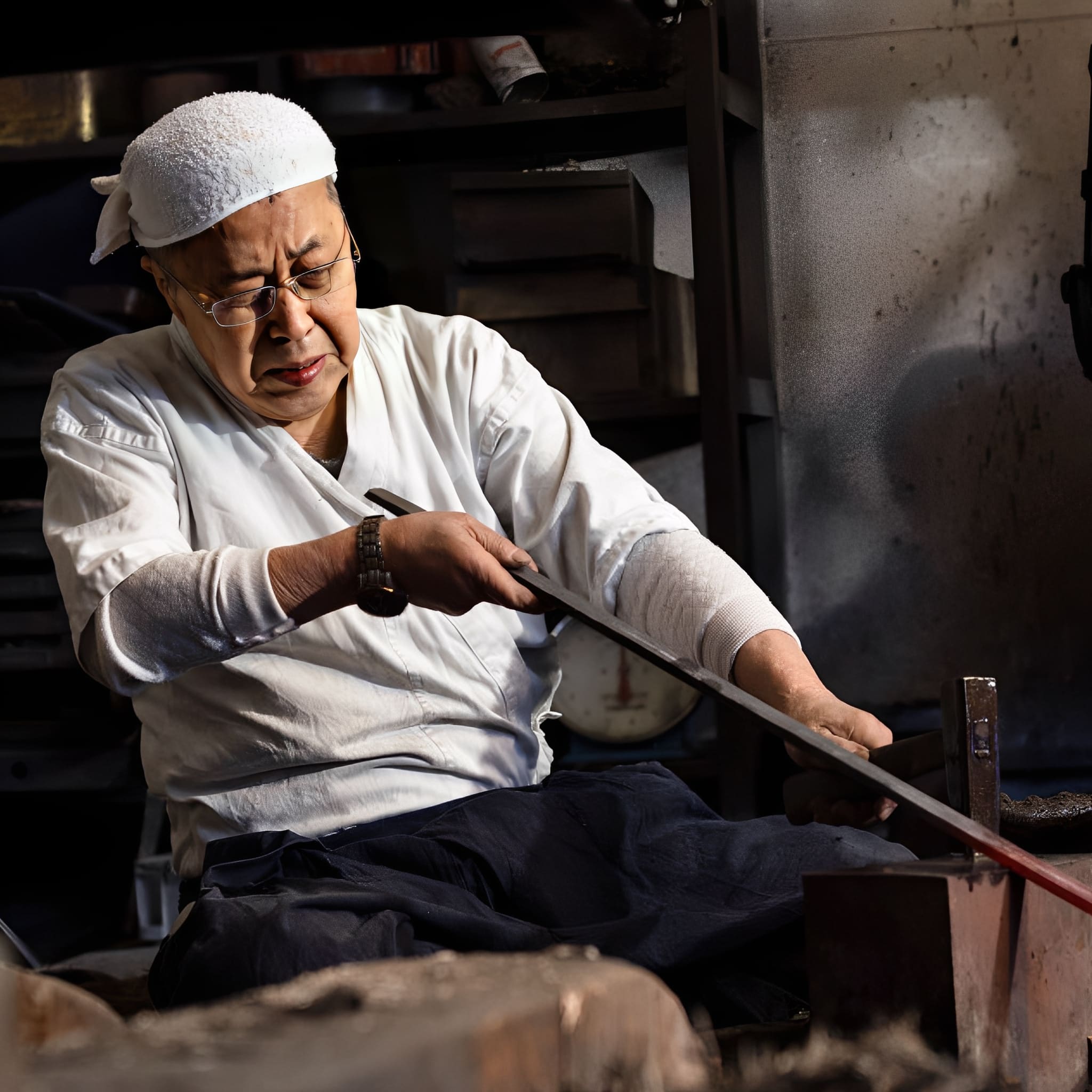
The Art of Traditional Forging
Each katana we craft is born from centuries of samurai tradition.
Our master smiths shape every blade by hand, folding the steel to achieve unmatched strength, flexibility, and beauty.
This time-honored process is not just about creating a weapon? it’s about preserving a legacy of discipline, honor, and artistry.
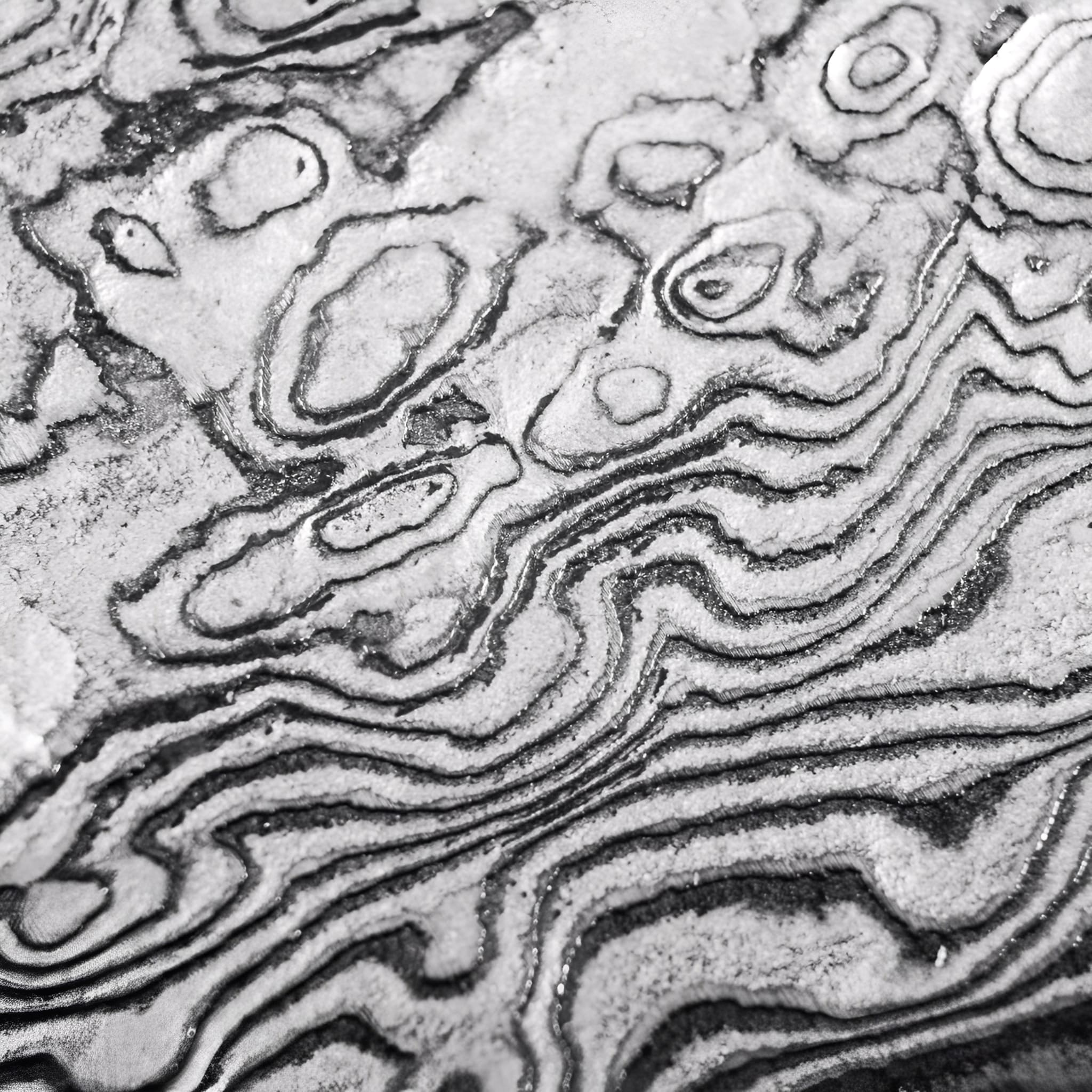
Materials Chosen Without Compromise
We select only the highest-grade steels and authentic fittings to ensure every katana is both a masterpiece and a reliable companion.
From the flawless hamon line to the perfectly balanced tang, each detail is carefully inspected to meet the highest standards of performance and aesthetics.
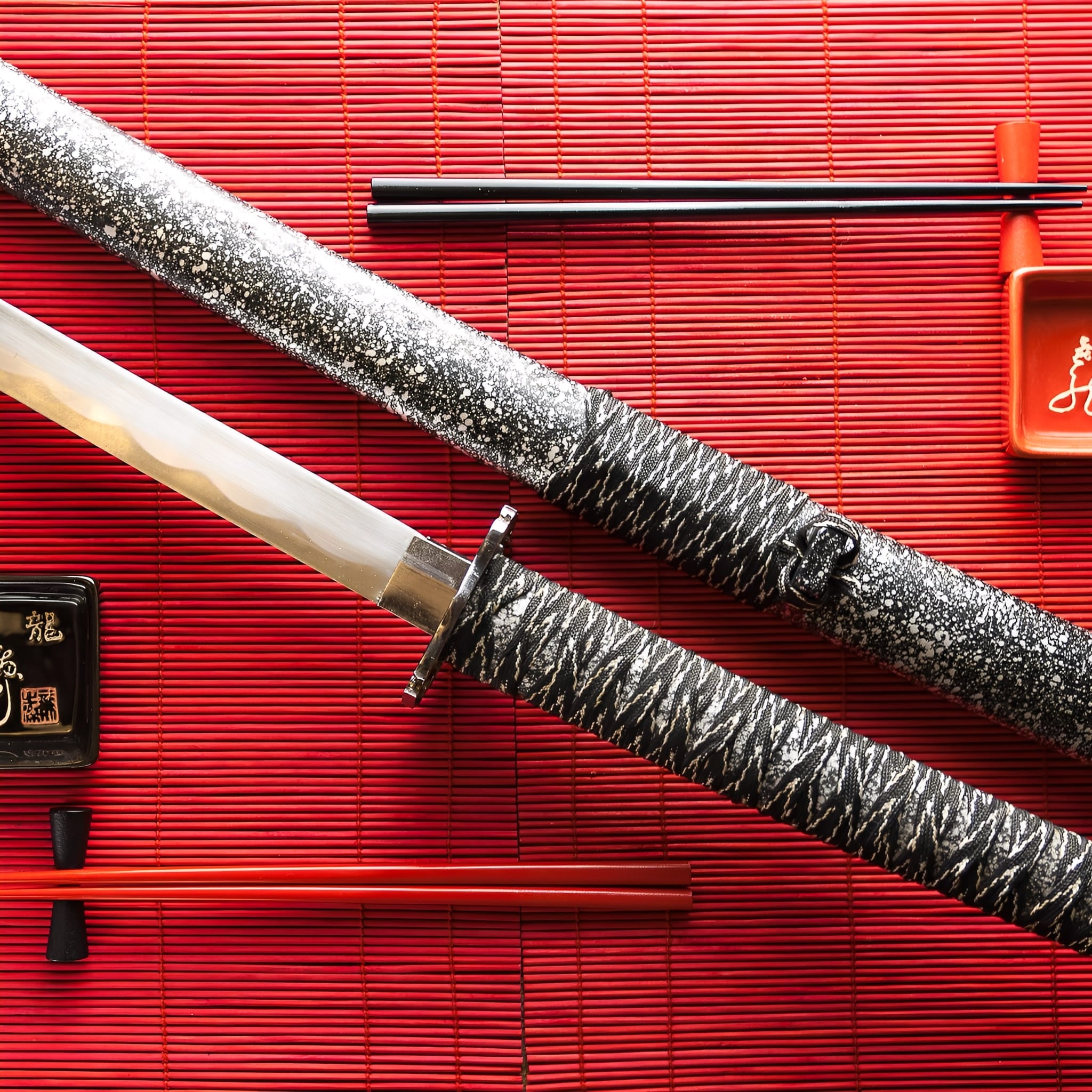
More Than a Sword, A Lifelong Legacy
Owning a handmade katana is an experience that goes beyond the blade itself. It’s holding history, tradition, and craftsmanship in your hands.
Whether displayed as a work of art or wielded with precision, your katana will stand as a symbol of timeless skill and dedication for generations to come.
-
Key Destinations
United States: 5–7 days
Canada: 5–7 days
Australia: 6–9 days
Denmark: 4–6 days
Netherlands: 3–5 days
Sweden: 4–6 days
Switzerland: 3–5 days
Finland: 5–7 days
Singapore: 6–8 days -
Central European Partners
France: 2–3 days
Germany: 3–5 days
Spain: 4–6 days
Italy: 4–6 days
Belgium: 3–5 days
Austria: 4–6 days
Ireland: 4–6 days
Poland: 4–6 days
Portugal: 4–6 days -
Extended EU Network
Czechia: 4–6 days
Hungary: 4–6 days
Slovakia: 4–6 days
Slovenia: 5–7 days
Romania: 5–7 days
Bulgaria: 5–7 days
Croatia: 5–7 days
Serbia: 5–7 days
Estonia: 5–7 days
Latvia: 5–7 days
Lithuania: 5–7 days
Luxembourg: 3–5 days
Greece: 5–8 days -
FAQ’s
Visit our FAQs page to find answers to common questions.